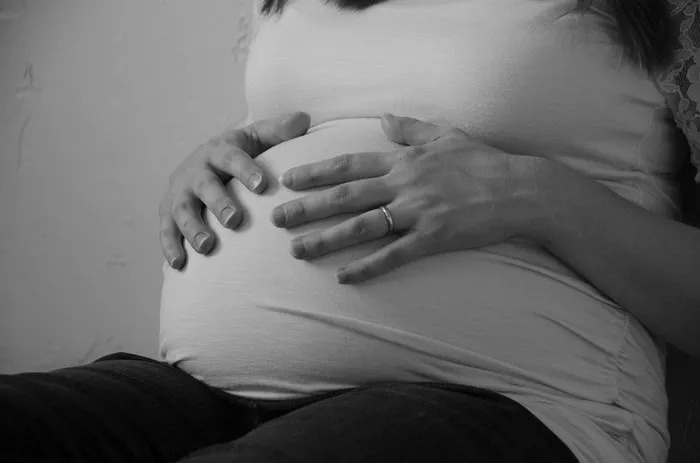Fallopian tubes play a crucial role in conception by providing a pathway for the egg to travel from the ovary to the uterus. Damage to these delicate structures can significantly impact fertility. In this article, we will delve into the various factors that can lead to damage to the fallopian tubes, potentially hindering a woman’s ability to conceive.
Infections:
Sexually transmitted infections (STIs) such as chlamydia and gonorrhea pose significant risks to reproductive health, particularly in women. When left untreated, these infections can wreak havoc on the delicate structures of the female reproductive system, including the fallopian tubes. The bacteria responsible for STIs can cause inflammation and scarring within the fallopian tubes, ultimately leading to blockages and fertility issues. This underscores the importance of early detection and treatment of STIs to prevent long-term damage to reproductive organs.
Pelvic Inflammatory Disease (PID):
Pelvic Inflammatory Disease, commonly known as PID, is a serious complication of certain sexually transmitted infections, particularly chlamydia and gonorrhea. When these infections spread to the upper genital tract, they can cause inflammation and infection of the fallopian tubes, ovaries, and surrounding tissues. Untreated PID can result in severe damage to the fallopian tubes due to chronic inflammation and scarring, leading to infertility. It’s crucial for individuals at risk of STIs to seek prompt medical attention to prevent the development of PID and its associated complications.
Endometriosis:
Endometriosis is a chronic condition characterized by the growth of endometrial-like tissue outside the uterus, commonly on the ovaries, fallopian tubes, and other pelvic organs. As the menstrual cycle progresses, this misplaced tissue responds to hormonal changes, leading to inflammation, adhesions, and scarring. When endometrial implants affect the fallopian tubes, they can lead to adhesions and blockages, impairing fertility. Early diagnosis and management of endometriosis are essential to mitigate its impact on reproductive health and preserve fertility.
Previous Surgeries:
Surgical interventions in the pelvic area can inadvertently damage the fallopian tubes, compromising their function and increasing the risk of infertility. Procedures such as surgeries to treat ectopic pregnancies or remove ovarian cysts may require incisions near the fallopian tubes, potentially causing scarring or adhesions that obstruct the passage of eggs. Individuals undergoing pelvic surgeries should discuss the potential risks to reproductive health with their healthcare providers and explore strategies to minimize damage to the fallopian tubes.
Ectopic Pregnancies:
Ectopic pregnancies occur when a fertilized egg implants and begins to develop outside the uterus, most commonly within the fallopian tubes. This ectopic implantation can cause damage to the fallopian tubes, leading to scarring, blockages, or even rupture of the tube. While ectopic pregnancies are life-threatening emergencies that require immediate medical attention, they can also have long-term implications for fertility. Individuals who have experienced ectopic pregnancies should undergo thorough evaluation and counseling regarding their reproductive health and future fertility options.
Previous Tubal Ligation:
Tubal ligation, also known as “getting tubes tied,” is a surgical procedure for permanent contraception in which the fallopian tubes are either cut, sealed, or blocked to prevent the passage of eggs. While tubal ligation is highly effective in preventing pregnancy, it can sometimes result in unintended damage to the fallopian tubes, leading to infertility. In some cases, the procedure may cause scarring or blockages that interfere with the normal function of the fallopian tubes. Women considering tubal ligation should carefully weigh the benefits and risks of the procedure, including its potential impact on future fertility.
Congenital Abnormalities:
Some women may be born with congenital abnormalities in their fallopian tubes, such as blockages or malformations, which can hinder fertility. These abnormalities may interfere with the passage of eggs from the ovaries to the uterus, making it difficult for fertilization to occur naturally. While congenital fallopian tube abnormalities are relatively rare, they can have significant implications for reproductive health and may require specialized interventions to address fertility challenges.
Other Factors:
In addition to the aforementioned causes, several other factors may contribute to fallopian tube damage and infertility. Certain medical conditions, such as autoimmune disorders or pelvic inflammatory conditions not related to STIs, can predispose individuals to fallopian tube damage. Pelvic adhesions resulting from previous surgeries or infections can also obstruct the fallopian tubes, impeding the normal transport of eggs. Furthermore, environmental factors such as exposure to toxins or radiation may pose risks to reproductive health, potentially affecting the integrity and function of the fallopian tubes. Comprehensive evaluation and management of these contributing factors are essential in optimizing fertility outcomes for individuals affected by fallopian tube damage.
Conclusion:
Fallopian tube damage can have profound implications for fertility, affecting an individual’s ability to conceive naturally. Understanding the various causes of fallopian tube damage, including infections, inflammatory conditions, surgical interventions, and congenital abnormalities, is crucial for early detection, prevention, and management. By addressing underlying risk factors and adopting appropriate interventions, individuals can optimize their reproductive health and enhance their chances of achieving successful conception. Collaborative efforts between healthcare providers and individuals seeking fertility care are essential in navigating the complex landscape of fallopian tube-related infertility and achieving positive outcomes.
Related Topics:
Can a Woman Get Pregnant at 55: A Guide on Fertility in Later Life


























